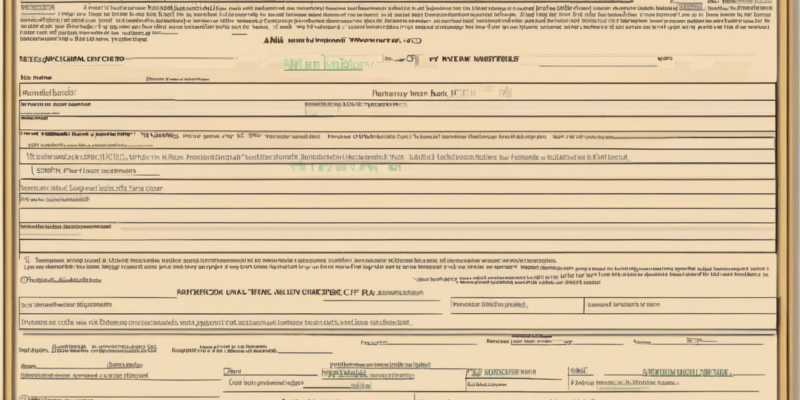Completing a Self Declaration Form is a routine procedure in various aspects of life, from applying for a job to traveling internationally. This document serves as a formal statement where an individual confirms that the information they are providing is true and accurate to the best of their knowledge. In this comprehensive guide, we will explore what a Self Declaration Form is, why it is important, how to fill it out correctly, common mistakes to avoid, and provide tips to streamline the process.
What is a Self Declaration Form?
A Self Declaration Form is a legal document where an individual makes a formal statement, confirming certain facts to be true. It is a way for individuals to self-report information without the need for external verification. These forms are commonly used in various scenarios, such as job applications, visa applications, insurance claims, and more.
Why is a Self Declaration Form Important?
Self Declaration Forms serve as a tool for ensuring transparency and accountability. By signing a Self Declaration Form, individuals declare that the information they provide is accurate and complete. This helps organizations make informed decisions based on the information provided by the individual.
How to Fill Out a Self Declaration Form Correctly
- Read the Form Thoroughly: Before filling out the form, carefully read all instructions and questions.
- Provide Accurate Information: Ensure that all information provided is accurate and up to date.
- Use Clear and Legible Handwriting: If filling out a physical form, use clear handwriting to avoid any misunderstandings.
- Sign and Date: Don’t forget to sign and date the form where required to validate the information provided.
Common Mistakes to Avoid
- Providing False Information: It is crucial to provide truthful information on a Self Declaration Form.
- Missing Signature: Forgetting to sign the form can make it invalid.
- Incomplete Form: Ensure all fields are filled out correctly to avoid delays or rejection.
Tips for Completing a Self Declaration Form
- Double-Check: Review the form before submitting to ensure accuracy.
- Seek Clarification: If you are unsure about any questions, seek clarification from the relevant authority.
- Keep a Copy: Make a copy of the completed form for your records.
Frequently Asked Questions (FAQs) About Completing a Self Declaration Form
Q: What is the purpose of a Self Declaration Form?
A: A Self Declaration Form is used for individuals to declare the accuracy of the information they provide without the need for external verification.
Q: Is a Self Declaration Form legally binding?
A: Yes, by signing a Self Declaration Form, you are legally attesting to the accuracy of the information provided.
Q: Can I make changes to a Self Declaration Form after signing it?
A: Once you have signed a Self Declaration Form, changes cannot be made. It is important to review the form before signing.
Q: Are Self Declaration Forms required for every application?
A: Self Declaration Forms are typically required for applications where the individual is required to self-report information.
Q: What should I do if I realize I made a mistake after submitting a Self Declaration Form?
A: If you discover an error after submission, contact the relevant authority immediately to rectify the mistake.
In conclusion, understanding the significance of a Self Declaration Form and knowing how to complete it accurately is essential for various processes in life. By following the guidelines outlined in this guide and being diligent in providing accurate information, individuals can navigate the completion of Self Declaration Forms with confidence.

